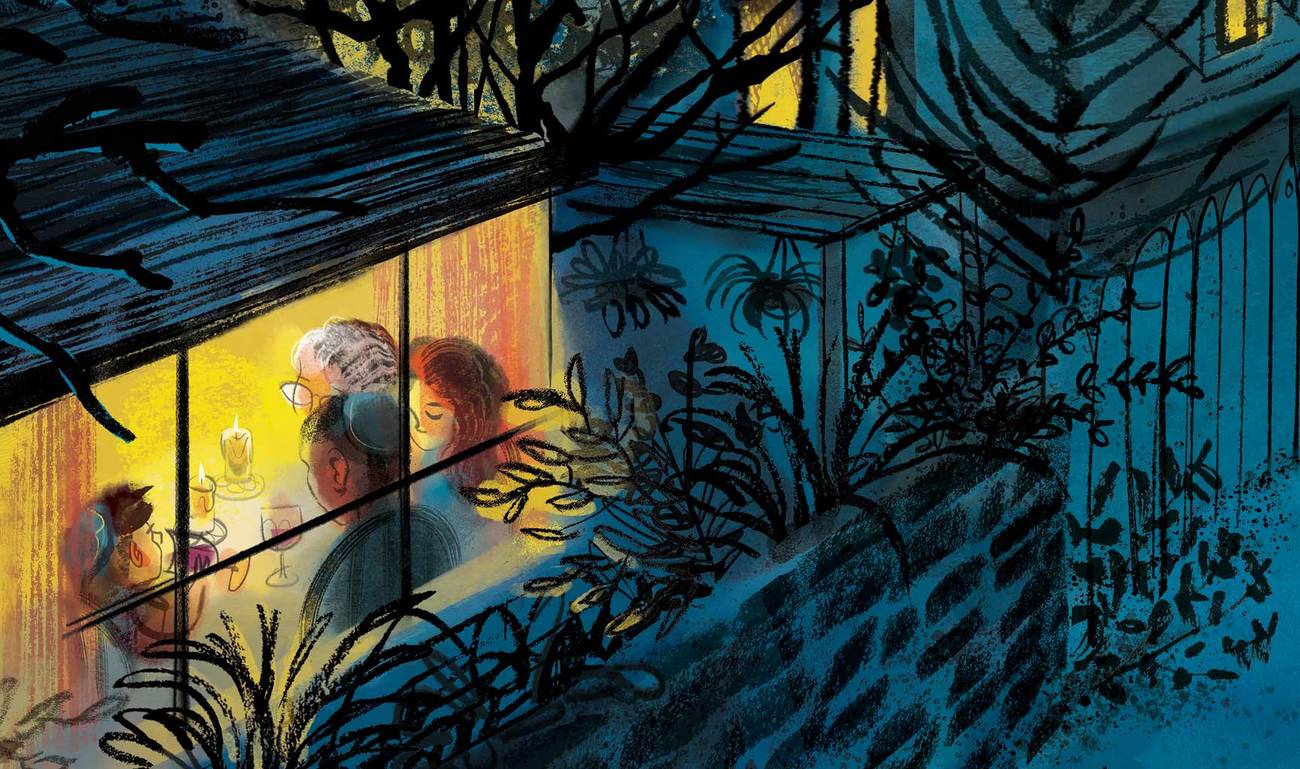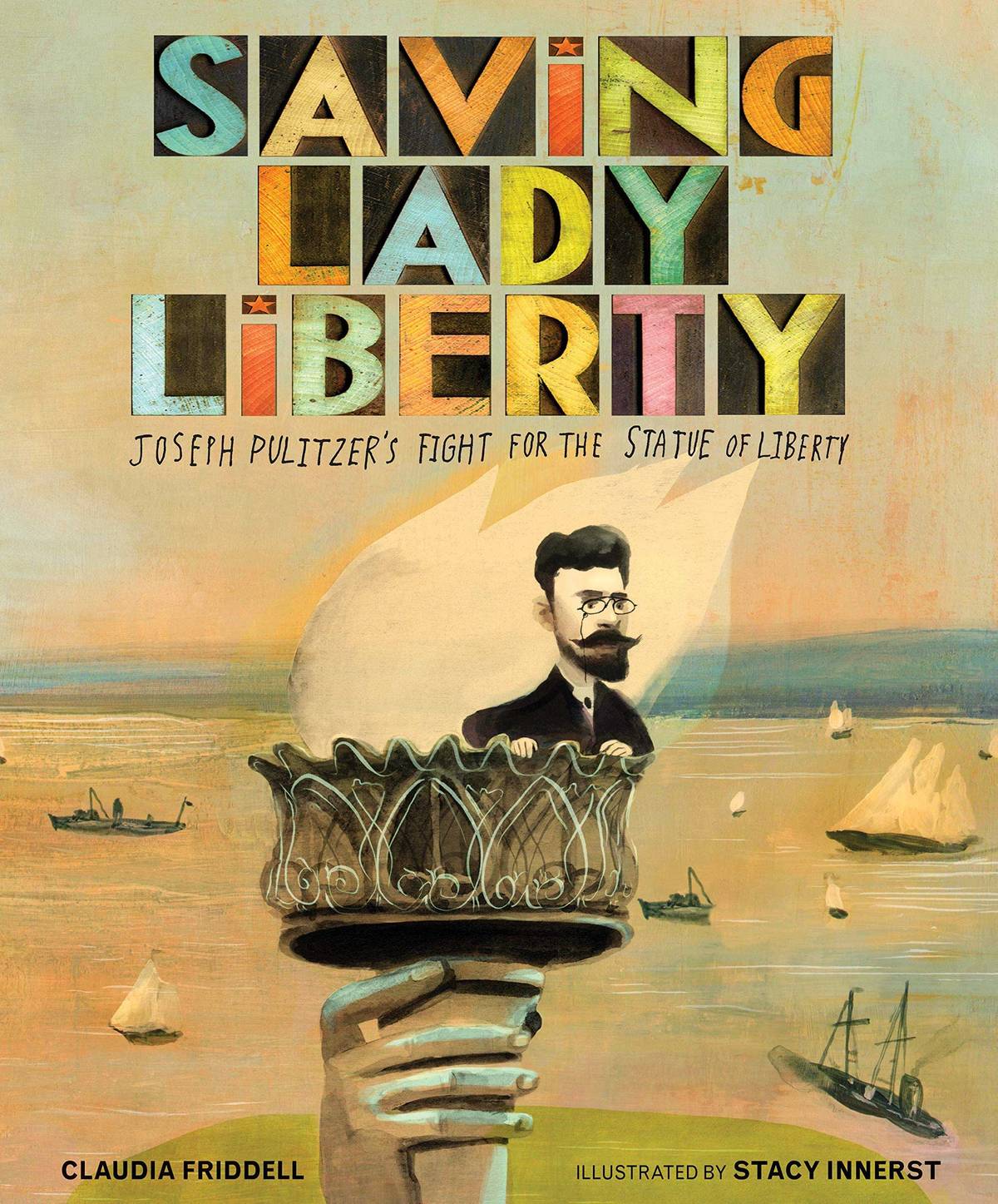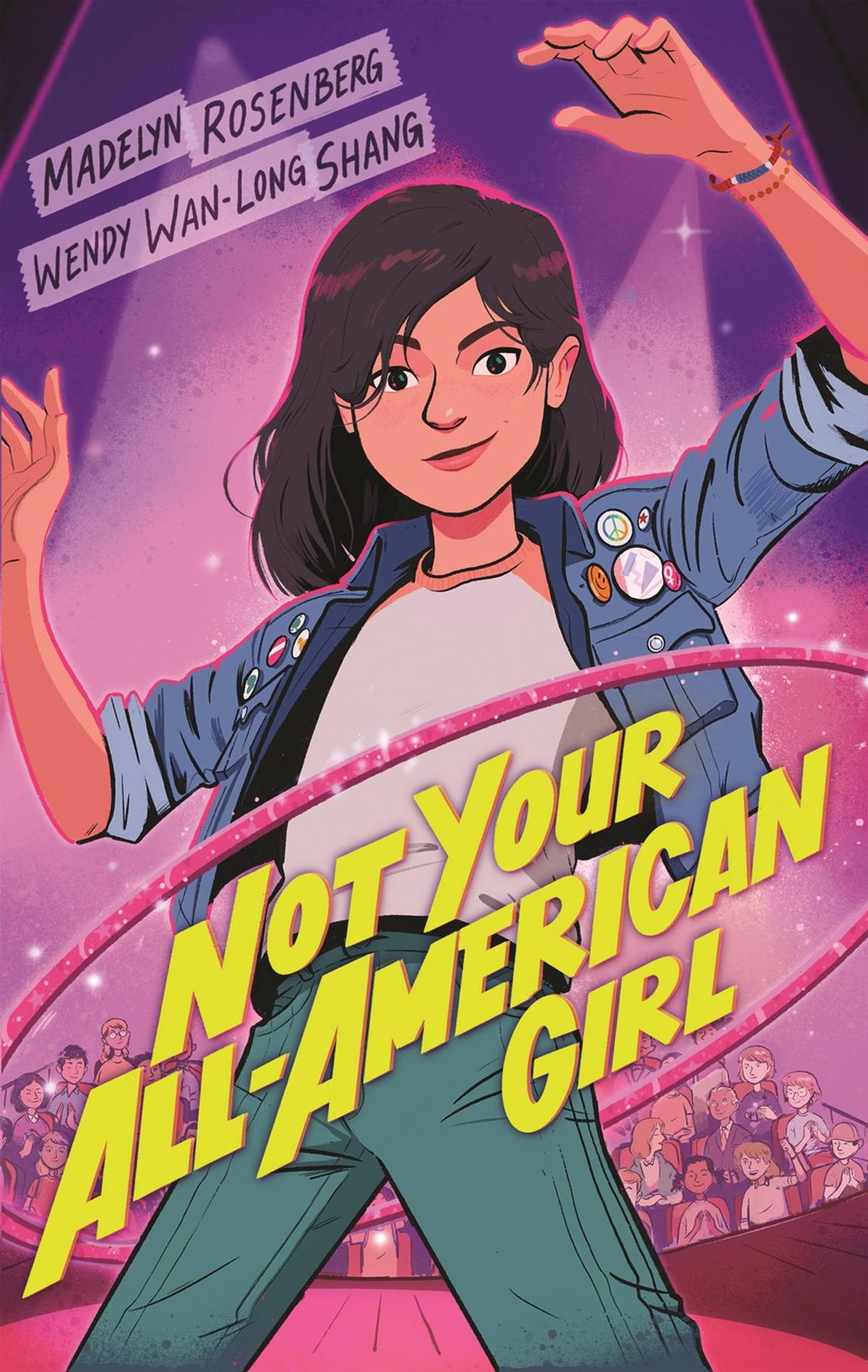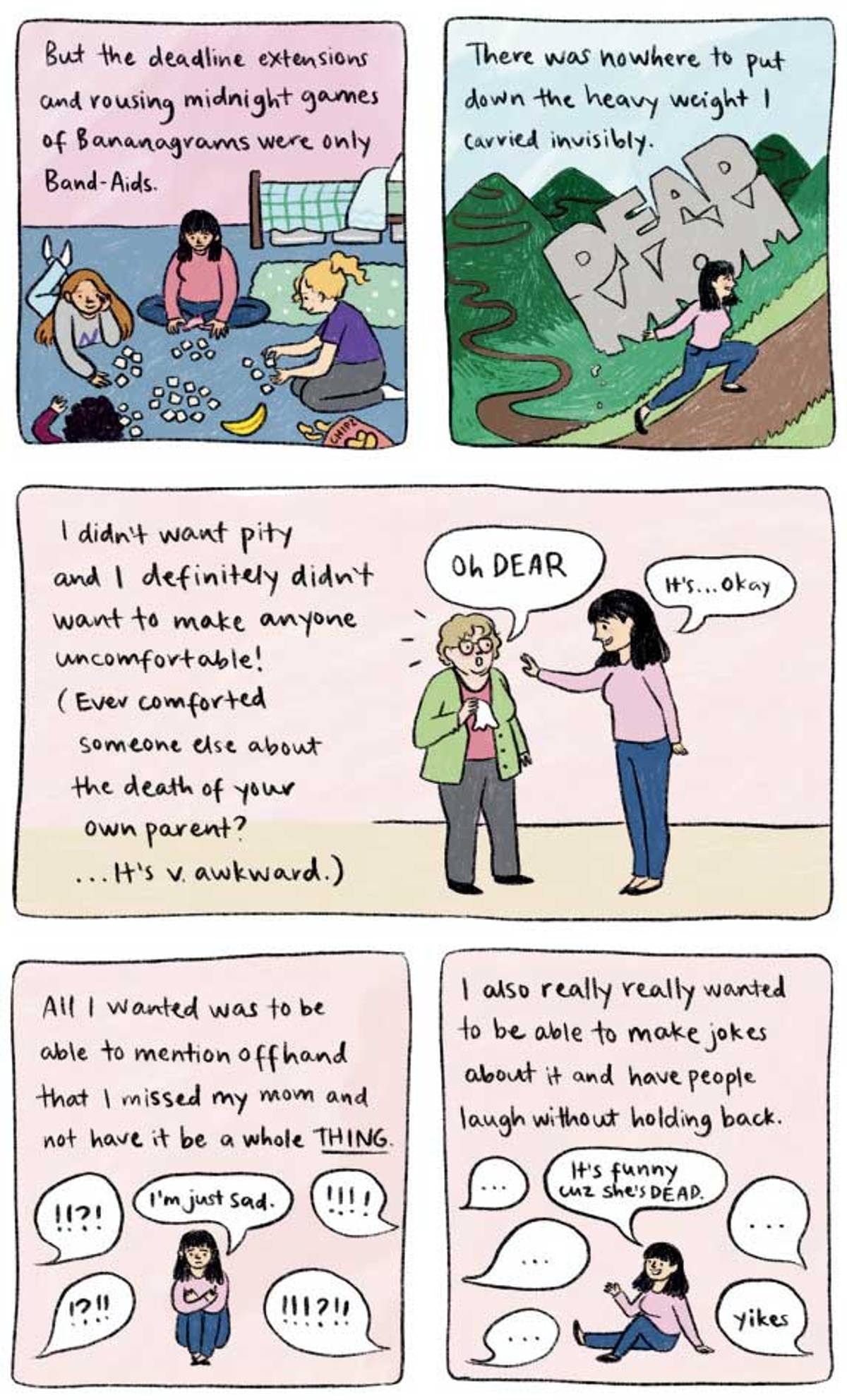Here are the rules: The books on this list have to be fun. No Holocaust books allowed. We Jewish grown-ups have so many opportunities to make our children feel terrified, sickened, and full of survivors’ guilt! Can we call an eight-day moratorium on Jewish trauma? I promise to do a whole separate roundup of shattering 2020 Holocaust books for children at some future point.
The books on this list must make good gifts; they are not intended to be a prescription for Jewish knowledge, literary betterment, or virtuous living. Gift books should not be spinach. Unlike the Sydney Taylor Committee, which has a mandate of choosing “outstanding books that authentically portray the Jewish experience,” the books on my list needn’t focus entirely on Jewishness, though they do have to center Jewish characters. (My rule: Said Jewish characters have to do something Jewish; they can’t just have Jewish names. It’s sort of like a Bechdel test for Jewy kidlit.) Furthermore, in a picture book or graphic novel, the art has to be fabulous.
Full disclosure: This year I’m also on the Sydney Taylor Committee, where I will have to respect other people’s opinions and make decisions as a team. I look forward to all the other judges making me suffer.
You’re the Cheese in My Blintz by Leslie Kimmelman, illustrated by Ramona Kaulitzki, is so freaking cute. And the rhymes scan! (Poor scansion is worse than the Holocaust.) (That was a joke.) Each intimate, quiet-feeling page depicts a Jewish baby and grown-up; the pairings are diverse in terms of race, ethnicity, and religious observance. One spread reads: “You’re the kick in my hora./You’re the potato in my knish./You’re the lights on my menorah,/and the star on which I wish.” The art is simple, warm, and accessible.
Buen Shabat, Shabbat Shalom by Sarah Aroeste, illustrated by Ayesha L. Rubio, is apparently the first children’s book ever published in both English and Ladino. Sephardic representation! Rhyming couplets show a family celebrating Shabbat: “Time for blessings, las berahas./For wine and challah, we say grasias!” The art’s bold and cute, with a Pixar vibe, and I love the tiny Sephardic décor touches, like the framed hamsas on the wall. Both the writer and illustrator are Sephardic: Aroeste’s family roots are in Thessaloniki; Rubio grew up in Spain.
In Welcoming Elijah: A Passover Tale with a Tail by Lesléa Newman, illustrated by Susan Gal, there are two Elijahs (or are there?)—one is the prophet; the other is a lonely, hungry kitten prowling around outside a house during a Seder. Guess how the book ends. If there was ever a doubt that Newman (winner of the Cat Writers’ Association Litter-ary Award, which I did not know existed but am delighted about) is a true cat person, this book sets it to rest. One of her earlier picture books, Ketzel, the Cat Who Composed, was on Tablet’s best books list in 2015, and it’s a toss-up whether Ketzel or Elijah is more adorable. (Fuzzy little all-white Elijah has giant anime eyes and tiny pink ears; sassy black and white Ketzel struts across the keyboard with saucy, ultra-kitty body language. It’s a tie.) Newman, the author of over 70 books for kids and adults (including the groundbreaking Heather Has Two Mommies) and the winner of last year’s Sydney Taylor Award for lifetime achievement, is also a poet, and it shows. The book doesn’t rhyme, but feels like a meditation or a song, with suspense and lovely rhythms. Gal’s art is luminous, its stained-glass colors and golden light highlighting a diverse, loving, and slightly chaotic Seder.
I Am the Tree of Life: My Jewish Yoga Book by Rabbi Mychal Copeland, illustrated by Andre Ceolin, is a book depicting familiar yoga poses and linking them to bits of Torah text. Boat Pose is tied to the story of Noah’s ark; Camel Pose is linked to that of Rebecca at the well; Warrior One accompanies the story of Deborah and Yael; Warrior Two is paired with David and Goliath. The poses are demonstrated by a light-skinned little girl and a dark-skinned little boy. In the back matter, Copeland—the spiritual leader of Congregation Sha’ar Zahav in San Francisco—is careful to acknowledge the ancient Indian origins of yoga and its foundation in other religious traditions; she’s clearly sensitive to concerns about cultural appropriation. Ceolin’s soothing art draws the reader in; given how stressed-out kids and families are right now, a bit of reading, study, and movement might do us all good.
Sweet Tamales for Purim by Barbara Bietz, illustrated by John Kanzler, is inspired by a real-life event: a Purim Ball in 1886 thrown by the Hebrew Ladies Benevolent Society of Tucson to which the entire town was invited. In this telling, a little girl named Rebecca is excited for the holiday (and her non-Jewish friend Luis is excited to use his maracas to help drown out Haman’s name), until she discovers that the family goat has eaten all the hamentashen. Luis’ mom comes to the rescue by helping the kids make a delicious substitute: cinnamon-sugar and raisin-filled tamales. The old-fashioned, oil-painterly illustrations are not my personal jam, but they’re accomplished and fit the story. It’s rare to see Jewish historical picture books set in the American Southwest, making this a sweet snack indeed.
Asteroid Goldberg: Passover in Outer Space by Brianna Caplan Sayres, illustrated by Merrill Rainey, is weird as heck and I am here for it. When a traditional Passover is off the table for Asteroid’s astronaut family, she gets them to make do in an out-this-world way. (Maybe next year, Asteroid and the rest of us will get to have a normal Seder on Earth! Who knows!) The Goldbergs zip around the Milky Way, using the Big Dipper as a ladle to scoop up some of Jupiter’s moons, which turn out to be lighter-than-air matzo balls; then snapping off a bit of Saturn’s rings, made of matzo. Reclining while you eat, it turns out, is easy in zero gravity. And that metal plate in your robot dog’s head pops up to provide a perfect hiding place for the afikoman. Kinetic, zany digital illustrations match the manic mood.
‘Saving Lady Liberty’ by Gloria Fridell, illustrated by Stacy InnerstCalkins Creek
Saving Lady Liberty by Gloria Fridell, with art by the great Stacy Innerst (who illustrated last year’s The Book Rescuer and 2017’s Ruth Bader Ginsburg: The Case of RBG vs. Inequality) is visually stunning. It’s the story of Jewish immigrant publisher Joseph Pulitzer and his crowdfunding campaign to build the pedestal for the Statue of Liberty. Wealthy New Yorkers weren’t terribly enthused about paying for this symbol of welcome in New York harbor, so Pulitzer called on his readership to “chip in” (in the words of many a future MoveOn fundraising email). They delivered—one of the treats of Innerst’s luscious, saturated, mixed-media work is the reproduction of little kids’ letters accompanying the pennies they sent in. (“We send you from our kindergarten at Davenport, Iowa, for the pedestal of Bartholdi Statue, $1.35. I am a little girl belonging to the school and am writing this letter for the school. We have twenty-six children at our school. I am not quite eight years old, and so you must not expect to get a very good letter from me. —Esther.”) The back matter is chock full of excellent info … though I bemoan the missed opportunity to mention that Emma Lazarus, equally idealistic, was also Jewish, but came from a far more genteel background than Pulitzer.
The Ninth Night of Hanukkah by Erica S. Perl, illustrated by Shahar Kober, is another story that seems perfectly timed to this moment. Max and Rachel have just moved to a new apartment, and no one can find the box with the Hanukkah stuff in it. Fortunately, their good-hearted, non-Jewish neighbors step up with sometimes offbeat but workable substitutions (the Watson twins in 3B don’t have a dreidel, but they offer something else that spins—a hula hoop; when Dad can’t find his fave latke pan, Joe the super shares his french fries). At the end of the holiday, the kids invent a new celebration: a ninth night inspired by the shamash, the helper candle, to say thank you and celebrate the act of helping others. Israeli designer Kober’s confident, clean-lined illustrations are charming.
I mentioned Fish Out of Water by Joanne Levy and Turtle Boy by Evan Wolkenstein in my September roundup of helpful books for kids with anxiety. Check them out!
If you have a young foodie at home, A Place at the Table by Saadia Faruqi and Laura Shovan will prove unputdownable. Sixth graders Sara and Elizabeth are in a South Asian cooking class together, but have nothing in common: Sara, a new student who’s just transferred from a small Muslim private school, is there because her overprotective mom is the instructor and won’t let her stay home alone; Elizabeth is there because she’s desperate to learn to cook. Her dad travels all the time and her British Jewish mom, struggling with depression, doesn’t cook. The descriptions of food made my mouth water. The book has a light touch despite dealing with heavy issues like racism, economic anxiety, familial mental illness, and the girls’ worries that their moms will fail their impending U.S. citizenship tests. The chapters alternate between Elizabeth’s and Sara’s perspectives; I liked both voices. (I particularly enjoyed Sara’s description of her emotional state as “angry bubbles”—it’s great when middle-grade stories acknowledge kids’ rage.) The girls gradually become friends and whip up a scheme to help their families by winning a cooking contest, creating a delicious dessert combining both their culinary heritages.
‘Not Your All-American Girl’ by Madelyn Rosenberg and Wendy Wan-Long ShangScholastic Press
Not Your All-American Girl by Madelyn Rosenberg and Wendy Wan-Long Shang is flat-out hilarious. I loved this duo’s last book, This Is Just a Test, and I love this one even more. The protagonist here, Chinese-American and Jewish Lauren, is the younger sister of This Is Just a Test‘s David, so—yay!—the dueling Chinese and Jewish grandmothers are back! And more passive-aggressive and competitive with each other than ever! (Please, someone, give these bubbes a sitcom, stat.) Again we get a delicious onslaught of ’80s pop culture references (though this time there’s thankfully more Star Search and less The Day After). Lauren, a terrific singer, doesn’t get the lead in the school musical because her teacher informs her that she doesn’t look like the “All-American Girl” the part calls for. Her less musically talented (but blond!) bestie gets the lead instead. Lauren winds up in the chorus and has to deal with her churned-up feelings. Tuning in to a country radio show and hearing a mournful, gorgeous, plaintive singer, she calls the DJ—remember doing that?—to ask the name of the artist. When she hears “Patsy Klein,” she imagines a Jewish musical soulmate. There are many shenanigans, some of them mall-based. The book is tightly written and very, very satisfying.
Becoming Brianna by Terri Libenson is a clever, accessible graphic novel that might be a good choice for kids who don’t always love to read. Brianna, who deals with a ton of social anxiety, is facing her 13th birthday and coping with … whatever the bat mitzvah mom equivalent of a Bridezilla is. Chapters shift between the day of the bat mitzvah and the eight months leading up to it as Brianna faces challenges at home and at school. It’s easy to read, funny, and endearing.
Get a Grip, Vivy Cohen by Sarah Kapit feels way too accomplished to be a debut novel. Vivy is an autistic 11-year-old who loves baseball and especially loves the knuckleball. She practices pitching to her big brother constantly, but when she’s scouted by a local coach for an all-boys team, she has to convince her overprotective mom to let her play. The book is told in letters and emails between Vivy and her idol, major league pitcher (and noted knuckleballer) VJ Capello. I’m not usually a fan of epistolary novels; they can feel static and awkwardly exposition-y. But Vivy’s voice is perfection (Kapit is herself autistic) and the way we gradually learn about VJ’s own struggles is flawlessly handled. The book is short, funny, and very moving. It makes autistic behaviors and coping mechanisms—flapping hands, shutting down when overwhelmed, an overly literal understanding of language, obsessions like Vivy’s mania for pitching—comprehensible to us neurotypical folks, and I’m sure readers on the spectrum will feel seen and recognized. You needn’t be a baseball fan to love this book (though if you are me, and like Vivy were the only girl on a Little League team, and if you are so fascinated by the knuckleball you actually read R.A. Dickey’s memoir voluntarily, you will be in hog heaven). It’s utterly winsome.
I wrote about The Way Back by Gavriel Savit elsewhere; if you’re book-shopping for an advanced reader with a Goth streak who doesn’t mind slow pacing, snatch this sucker up.
The New Queer Conscience by Adam Eli is a wee (hand-sized), beautifully designed little book that looks like a gift. It’s part of a snazzy series called Pocket Change Collective; all the books are inspiring manifestos from young writers with strong voices who come from a variety of too-little-heard-from backgrounds. Eli’s book—the spiffy cover of which spotlights a curly haired boy in a kippah and Star of David necklace against a hot-pink background, surrounded by flowers—is kind and funny. Give it to kids of all genders and sexual orientations, but it’ll especially speak to LGBTQ kids. Eli uses Jewish teachings and principles as the foundation for both his own coming-out story and a call for collective action, fierceness, compassion, love, and support for one another’s struggles as well as those of the next generation.
From ‘Dancing at the Pity Party’ by Tyler FederDial Books
Dancing at the Pity Party by Tyler Feder is a memoir told in graphic novel form that made me want to hug its author. (Hey, I wonder if we’ll ever get to hug people who don’t live with us ever again?) Not just because she lost her mom to cancer far too young, but because she’s so freaking funny and talented. Dancing at the Pity Party is a love letter to Feder’s clearly awesome mother and a helpful guide to Jewish mourning practices. It will be a comfort to any kid who’s grieving, but especially to anyone who’s lost a parent. I’ll give it to grown-ups, too. Judaism is clearly a source of solace for Feder, which is especially nice to read about because Jewish kidlit all too often focuses on Judaism solely as a locus of discrimination. I adore Feder’s illustrations, especially the teeny little listicle-y ones that remind me of Lynda Barry’s work.
Today Tonight Tomorrow by Rachel Lynn Solomon is an enemies-to-lovers romance, and who among us does not love an enemies-to-lovers romance? (Caveat: as long as neither party is an asshole. No assholes, please.) Also, everything happens in one 24-hour period, which is both fun and cinematic. The plot: On the last day of the school year, Rowan and Neil, who have been rivals for all four years of high school, seem to have reached the end of the road. Neil wins valedictorian. Which sucks for Rowan, who decides that her final shot at besting her annoying freckle-faced rival is to defeat him at Howl, the annual senior class scavenger hunt. The duo wind up having to team up, and the more time Rowan spends with Neil, the more she sees that she’s made some pretty wrongful assumptions. The dude is actually a mensch (and, it turns out, a fellow Jew) and also freckles are kind of hot. Today Tonight Tomorrow is not only a love story; it’s also a love letter to its setting, Seattle—as the kids race around solving puzzles and collecting clues, you feel that you too are exploring this cool and quirky and beautiful city. (All the locations in the book are real except one.) Sweet and swoony.
Finally, Honey on the Page: A Treasury of Yiddish Children’s Literature, edited and translated by Miriam Udel, with a foreword by Jack Zipes, is more of a gift for grown-ups and families than for kids. But it’s a vital work of scholarship, with enough illustration (by the talented Paula Cohen) to make it kid-friendly if you choose your readings wisely. There’s a mix of 48 poems and stories, most of them never before available in English. They were written from the turn of the century through the 1970s, by both men and women, by writers in Eastern Europe, New York City, and Latin America. Some are about Jewish holidays and traditions, but a lot are secular. Some are somber; some are hilarious. It’s thrilling to read children’s literature suffused with socialism and radicalism and humanism (Labzik, the proletarian puppy!); Udel’s collection makes clear why so many cool-kid, nonreligious millennials and Gen Zers are into learning and revitalizing Yiddish in a punk-rock, queer-inflected way.
Most of us can’t be together with our families this Hanukkah, the way we’d like to be, the way we would be in a normal year. But an escape in a good book can provide a little consolation. Not enough. But some.



